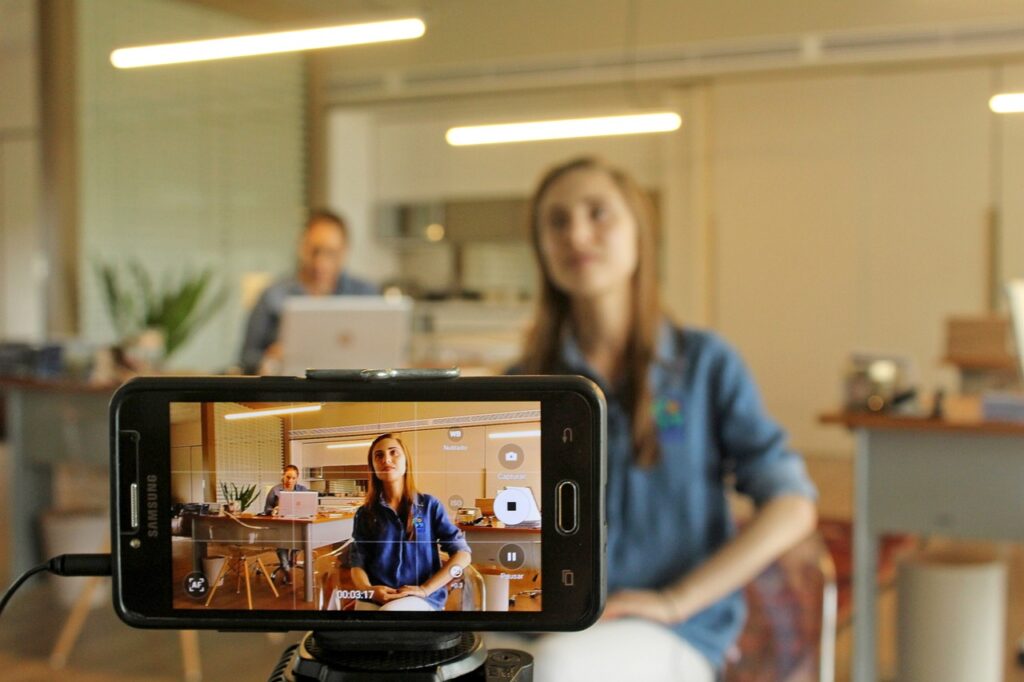
Why not talk about the highlights of your journal article or current research on camera? The Global Souths Hub provides a platform to showcase your papers and work through video.
“A video allows greater visibility and makes it even more likely to be found through various searches than a journal article, positively impacting downloads and increasing citations.“
It is simple to shoot a high-quality film on your smartphone or a webcam using meeting software (such as Zoom). We have prepared some top tips below for creating engaging videos:
Preparing/Scripting
- Tell the story behind your research by talking about a finding, viewpoint, question or topic.
- Make sure you include the main results /conclusions, but don’t focus on the methodology too much.
- Keep your tone conversational, as if you were telling a friend/colleague about your work.
- Prepare talking points focusing on 3-5 key takeaways. Don’t read off a script.
- Make sure you practise, but try not to over-rehearse, as your delivery should be natural.
Set-up (on a Smartphone)
- Pick an interesting background. The area should also be brightly lit with natural lighting. Avoid backlighting so light should be in front (or diagonal) rather than behind the subject being filmed.
- Put your smartphone in a horizontal position recording in landscape mode (widescreen) using either a mini tripod (if one is available) or rest your camera on a steady surface.
- Sit yourself (or ask your subject) to sit a metre away from the background so it is slightly out-of-focus.
- You should also be physically close to the camera so the person speaking is in focus.
- Make sure you or your subject is at the centre of the frame, or to the left or right of the frame. Do not to chop off your subject’s head.
- If you (or your subject) are head on, look at the lens of the camera at all times. If you are to the side, look towards the opposite side past the camera.
Examples of a good shot:


DO: Make sure your space is well lit.
Examples of a bad shot:


DON’T: take a wide angle shot or chop off the subject’s head.


DON’T place the camera below or above your subject’s eye level.
Filming
- Keep your video short – no longer than 2 mins 20 seconds to hold viewers’ attention (see video abstract guidance).
- The grid format of most phones will help you compose your image correctly.
- Keep the camera at eye level or slightly higher at all times.
- Sound quality is really important so either ask your institution or invest in an external directional microphone.
Set-up (on a Zoom)
- Once you’ve downloaded the latest version of Zoom, select Preferences in the Zoom menu and go to Video. Make sure you check Enable HD and adjust for low light – Auto
- Select Preferences in the Zoom menu and go to Audio. The best audio will come from an external directional microphone. Try and borrow one from your institution if you can. Make sure you suppress background noise at Medium.
- When setting up your webcam, position the camera at eye-level or slightly higher.
- You may also go to your Zoom Settings > Backgrounds & Filters, and blur your background, or choose a virtual background.
- Once you are set up, remember to press record on your screen.
Editing
- Take a look at this Wiki page for advice on how to edit your video.
- Include a Call-to-Action: Encourage your viewer to download the full article and read it. Make sure you add a direct link or QR code to the article in an end slide.
- Try and add in or overlay other images (a still or video) whenever this is possible.
- Technical specifications: Ensure the video has a resolution of at least 1280×720 and a 16:9 aspect ratio.
Publishing
- Submit the video in one of the following formats: .mov, .mpg, or .mp4 (.mp4 preferred) with a maximum size (100MB) to us at [email protected].
- Make sure you send us a written transcript with the video. You can change a video to text using tools online (e.g. Notta).
- We check all video abstracts for quality, to make sure they are watchable. Unfortunately, we cannot always guarantee that we will publish your video.
- If the video is of a good quality, we will upload and circulate your video via our Global Souths YouTube channel.
- We will share the video via our Social Media channels (LinkedIn, and X feed).

Submit your story
We are always looking for new writers and content. Send us your a blog post idea, event or news item to the Global Souths Hub website curator:
